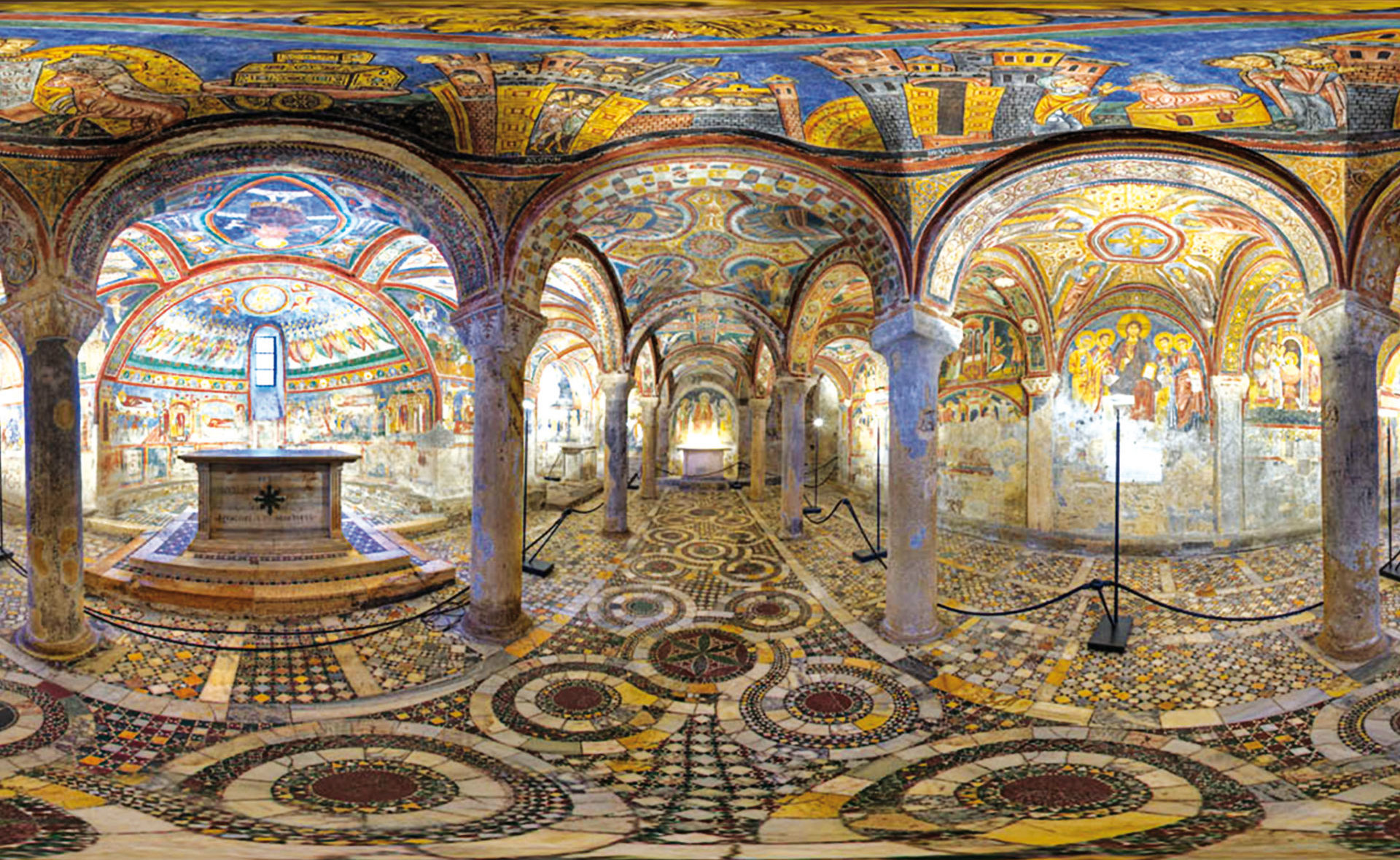A beautiful treasure of almost unknown 13th century frescoes.

The fresco cycle that adorns the Anagni Cathedral crypt in the celebrated “City of Popes” is preserved in near-intact condition and represents a unique jewel in the history of pre-Assisiate medieval painting.
Known also as the “Sistine Chapel of the Middle Ages”, the crypt was built by the bishop Pietro da Salerno at the same time as the church, between 1072 and 1104. The crypt was dedicated to Saint Magnus, martyr and patron saint of the city. The interior of the crypt is embellished with a precious cosmatesque floor and evocative frescoes covering an area of over 540 square metres.
The monumental Anagni cycle narrates and illustrates the story of man’s salvation from creation to the end of time, and was probably created between 1231 and 1255 by three different craftsmen, identified by the great Italian art historian Pietro Toesca as the “Master of Translation”, the “Master Ornamentalist” and the “Third Master of Anagni”.
As soon as you enter the crypt, it is impossible not to be drawn in by the brilliance of the strongly saturated colours, applied without shading to emphasise the symbolic meaning. Used as a metaphor for spirituality and transcendence, blue is undoubtedly the predominant colour, created from precious lapis lazuli dust. The Anagni pictorial cycle represents a single unified endeavour driven by the ultimate goal of representing man’s path to salvation in the presence of Christ, the Lux mundi, from the creation of the universe through to judgement day, with suggestively apocalyptic overtones.
It is interesting to note that the theme of the birth of man and the world is evoked from a scientific/astronomical point of view, the first appearance of such topics within a sacred building, merging science and faith to create something harmonious and beautiful.
